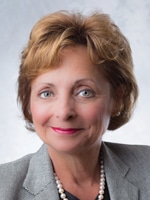Anne Paxton
October 2020—For nearly five decades, clinicians and laboratories aiming to screen LDL cholesterol (LDL-C) in adults to assess cardiovascular disease risk have contended with a problem generally beyond their control: lack of assurance that patients told to fast before a blood specimen is collected for lipid testing have indeed fasted.
Even as evidence to the contrary began to emerge, fasting was long believed to be necessary for the accurate assessment of LDL-C without the need for expensive and labor-intensive ultracentrifugation of plasma.
Patient compliance, however, often fell short of the ideal. Although many patients could be trusted to fast, others forgot to fast, tried to but failed, thought they had fasted but overlooked food intake, or opted not to be tested because they didn’t want to fast. “People would say, ‘Oh, yeah—I fasted,’ forgetting the doughnut they had,” says James Otvos, PhD, strategic director, NMR Diagnostics, LabCorp.
European recommendations published in 2016 supported nonfasting LDL testing and a U.S. guideline concurred two years later.
Now the struggle over fasting may be over for good—not because patients have mended their ways, but because a new formula for calculating LDL-C, developed by the National Institutes of Health and published this year, can be used with nonfasting lipid testing to produce results that for most purposes are just as good as fasting lipid testing (Sampson M, et al. JAMA Cardiol. 2020;5[5]:540–548).
With validation complete, the new NIH formula steps in to replace the Friedewald equation, which debuted in 1972. An improved competitor equation, developed by Seth Martin, MD, of Johns Hopkins University, was introduced in 2013. However, that equation did not fully edge out the Friedewald equation, in part because the Martin-Hopkins equation was proprietary and required a royalty for commercial use. For the Friedewald equation, it was taken as a given that lipid panel blood samples provide more accurate results from patients who were fasting.
More than 250,000 patient samples from LabCorp and other clinical laboratories were analyzed to validate the new NIH equation. The analysis showed that the equation calculates LDL-C more accurately than does the Friedewald equation, says Dorothy M. Adcock, MD, LabCorp’s chief medical officer, who is leading the adaptation of the company’s testing panels to the new NIH equation.

Dr. Adcock
Measuring LDL-C directly adds cost and in the past was tedious, Dr. Adcock notes, which is why the Friedewald equation was introduced long ago. It calculates LDL-C using this formula: Total cholesterol – HDL cholesterol – (Triglycerides/5). “With the Friedewald equation, most clinicians recommended that patients fast because we knew that triglycerides carried in chylomicrons, which for almost all of us increase after a meal, can significantly interfere with the calculation of LDL cholesterol when they are elevated,” Dr. Adcock says.
A guideline on the management of blood cholesterol put forth by multiple organizations and reported online in 2018 by the American College of Cardiology and American Heart Association established that lipid panels could be obtained in either a fasting or nonfasting state (Grundy SM, et al. J Am Coll Cardiol. 2019;73[24]:3168–3209). Despite that, most clinicians, trained that they will get a more accurate result with a fasting sample, have opted to play it safe—by recommending fasting—because results could be inaccurate when triglycerides are elevated.
“But even the 2018 guidelines state that you can collect samples in a fasting or nonfasting patient for initial testing, although if you identify a significant abnormality on the screen and want to repeat the test, you should repeat it fasting,” Dr. Adcock says. “That would be to confirm hypertriglyceridemia in those with pancreatitis or suspected pancreatitis, if you are screening for early-onset heart disease, and if you are screening for familial hyper-cholesterolemia.”
The biggest problem with the Friedewald equation is the way it estimates very-low-density lipoprotein cholesterol (VLDL-C), she notes. “It makes the assumption that VLDL-C is equivalent to total triglycerides divided by five.” But as triglycerides become elevated, their relationship with VLDL-C changes, which leads to significant underestimates of LDL cholesterol, particularly when LDL levels are very low, Dr. Adcock says.
In the 1970s and 1980s, treatment with statins or with the newer PCSK9 inhibitors was not available, so the Friedewald equation was more appropriate, she says. “But now we see low cholesterol levels in individuals on statins or PCSK9 inhibitor therapy—meaning that sometimes the Friedewald equation can lead to falsely low and sometimes nonsensically negative LDL-C levels.”
The new NIH equation is more accurate when triglycerides are elevated or LDL-C is low (below 70 mg/dL), Dr. Adcock says. “The guidelines state that if LDL-C is below 70, you should consider measuring direct LDL-C. But this will no longer be necessary if you use the NIH equation.”
The NIH equation performs equally well in fasting and nonfasting individuals, she says, “except for those few cases where you still need to obtain a fasting lipid panel. Using this new equation will allow the vast majority of patients to get their lipids drawn in a nonfasting state.”
LabCorp is introducing the NIH equation into its panels that include calculated LDL-C, and it is working closely with clients about the potential need to change their systems to accept the testing. LabCorp is also educating clinicians, “so they will be aware of the increased accuracy using the NIH equation in those samples with low LDL cholesterol values as well as in calculating LDL-C when triglycerides are elevated—above 400 mg/dL.”
The NIH equation is likely to encourage patient compliance with clinicians’ orders for testing, in Dr. Adcock’s view. “Some patients just don’t want to fast. Some don’t want the hassle of fasting and going to get their blood drawn first thing in the morning—that’s typically when the draw stations are the busiest.” While some other tests do require fasting, “nonfasting testing will make it more convenient for people to have the lipid panel drawn during the day when it may be more convenient for them and the draw site is not as busy.”
“I hope that those patients who may have been forgoing lipid testing because of the hassle of fasting will get their lipids tested,” she says, “because LDL-C is critical to determining cardiovascular risk.”
A key development pushing the U.S. consensus toward nonfasting lipid testing was the 2016 consensus statement of the European Atherosclerosis Society and European Federation of Clinical Chemistry and Laboratory Medicine, with Børge Nordestgaard as senior author, says coauthor Alan T. Remaley, MD, PhD (Clin Chem. 2016;62[7]:930–946). Dr. Nordestgaard has been a proponent of nonfasting lipid testing—now widely accepted and practiced in Europe—for many years, explains Dr. Remaley, director of immunoassay and special chemistry, National Heart, Lung and Blood Institute, and section chief of the lipoprotein metabolism laboratory, Cardiovascular and Pulmonary Branch, NHLBI.As the European statement notes, nonfasting is essentially the norm; most people consume several meals during the day and some consume snacks between meals. “The postprandial state therefore predominates over a 24-hour period,” the authors wrote.
In the U.S., the American Board of Pediatrics had made a recommendation in 2011 that fasting wasn’t necessary for children. But it wasn’t until 2018 that the American Heart Association and American College of Cardiology reported its guideline that nonfasting samples are sufficient for the initial screen for cardiovascular disease.
“For the most part,” Dr. Remaley says, “the lipid parameters do not change that much in the postprandial state. The only thing that significantly changes is triglycerides, and this is used in calculating LDL cholesterol by the Friedewald equation. Because of that, people recommended that you fast, since as triglycerides go up, the equation doesn’t work as well.” The inaccuracy starts at around 150 or 200 mg/dL, he says, “a range of TG that can readily occur in the postprandial state even in normal subjects.”
“Almost every lab and university immediately switched to direct HDL-C tests when they first became available in the late 1990s because HDL-C tests can be done on the automated instruments. Direct LDL-C tests became available shortly after that, but they’re still not widely used, although they are catching on. The direct LDL-C assays, unless the triglycerides are very high, are usually fairly accurate,” Dr. Remaley says.
Data from the Women’s Health Study showed that postprandial lipids were more predictive of cardiovascular events than fasting lipids. Earlier, Dr. Nordestgaard and many others had also shown that the lipoproteins that accumulate in the postprandial state are also atherogenic or at least are associated with cardiovascular disease risk, Dr. Remaley says. “Because most people aren’t in a fasting state—many people eat around the clock—it’s thought that the exposure of lipoproteins that you have after you eat may be more reflective of your risk. That seemed to hold true in the Women’s Health Study. So people started asking, ‘Well, why are we fasting?’”

Dr. Remaley
Dr. Remaley’s group developed the new NIH equation for calculating LDL cholesterol. It is accurate up to a TG of at least 800 mg/dL, he says. “So it’s not really necessary to fast to get an accurate LDL cholesterol any longer. You can either do it by a direct measurement or by this new calculation.”
The benefits of switching to nonfasting samples go beyond convenience and more lipid testing, one of which is safety. “There are reports of deaths, mostly from people who have diabetes and then go into hypoglycemic shock from fasting, leading in some cases to motor vehicle accidents,” Dr. Remaley says.
 CAP TODAY Pathology/Laboratory Medicine/Laboratory Management
CAP TODAY Pathology/Laboratory Medicine/Laboratory Management
